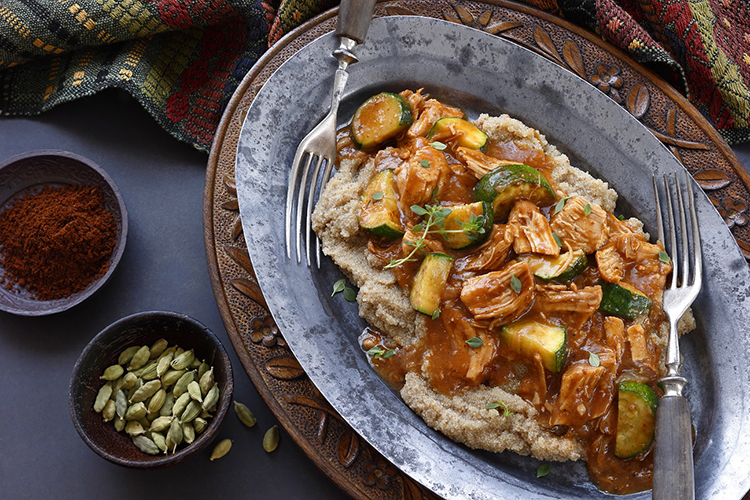Share This
In honor of Black History Month, we’re spending February celebrating all the vibrant, delicious foods of the African Heritage Diet. If you’re not familiar with Oldways’ A Taste of African Heritage, our six-week cooking curriculum focused on foods of the African diaspora, then get ready to be inspired by some seriously delicious food.
Whole grains are a part of heritage diets around the world, but did you know that Africa is home to more native grains than any other continent? Africa has its own species of rice, along with millet, sorghum, teff, several varieties of wheat, and dozens of other wild grains and cereal crops. Additionally, although not native to Africa, barley has a rich history in the cuisines and agriculture of many African nations, especially in North Africa. In general, grains tend to require less water and be more resistant to harsh weather conditions than other crops, making them natural staples of the diet in Africa’s dry deserts and sparse savannahs.
In celebration of the wealth of grain options available in the African Heritage Diet, we’d like to spotlight a few of our favorites:
- Barley
Barley has a pleasantly firm chew to it, making it ideal for grain salads and pilafs, or as a substitute for rice in stews or curry dishes. Barley has a rich flavor with mild sweetness and pairs well with mushrooms, root vegetables and warm spices. When shopping for barley, looked for whole grain hulled or naked barley, rather than pearled barley, which has been refined.
Try barley under this Vegetable Curry. - Millet
By changing the amount of liquid in the pan, millet can be prepared fluffy (for pilafs), sticky (for croquettes or patties), or creamy (for porridge). It’s delicious under curries and tastes best warm. Its buttery flavor pairs wonderfully with mushrooms, herbs, and squash.
Try it in Millet with Zucchini and Chickpeas. - Sorghum
Sorghum is a chewy grain with a texture much like large, Israeli-style couscous, making it great for grain salads. It can also be popped, like mini popcorn kernels. Sorghum flour is particularly good in pancakes, waffles and crepes, and provides hints of corn-like flavor. It pairs well with peanuts, berries, dates, and spices.
Try it in Sweet Sorghum Salad with Apples, Pine Nuts and Raisins. - Teff
Perhaps best-known as the main ingredient in injera, spongy Ethiopian flatbread used in place of utensils, this tiny grain is also very well-suited for porridge and polenta-style recipes. It’s also a great thickener in stews. Teff is slightly sweet with flavor undertones of cocoa and hazelnut and it pairs very nicely with nuts, chocolate, pumpkin, and dark fruits and berries.
Try it in Teff Polenta with Ethiopian Chicken Stew.
Finding A Taste of African Heritage Class Near You
Our well-loved cooking classes are offered at locations around the country, and there are many planned in February. For more information, check out our class directory and see if there’s one happening near you. And if the curriculum hasn’t made it to your town yet, consider signing up to teach a class! Anyone can become certified, and we’re always looking for volunteers. It’s great way to share your passion for food and good health with your community.
Happy Black History Month! We hope you enjoy exploring the many whole grain options of African heritage cuisine. (Caroline)



Comments
Add a Comment